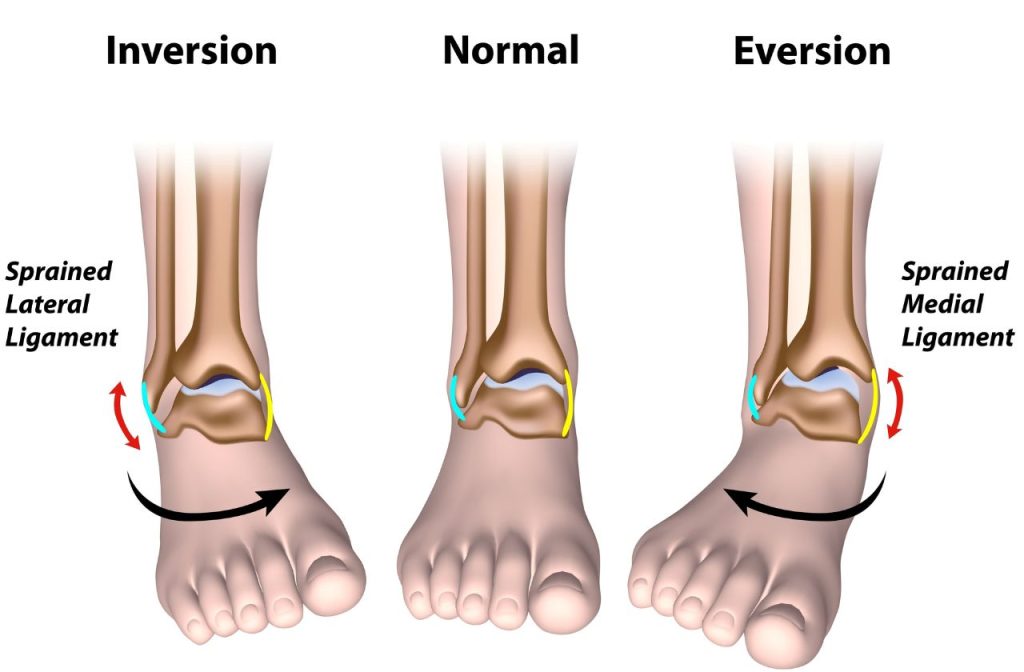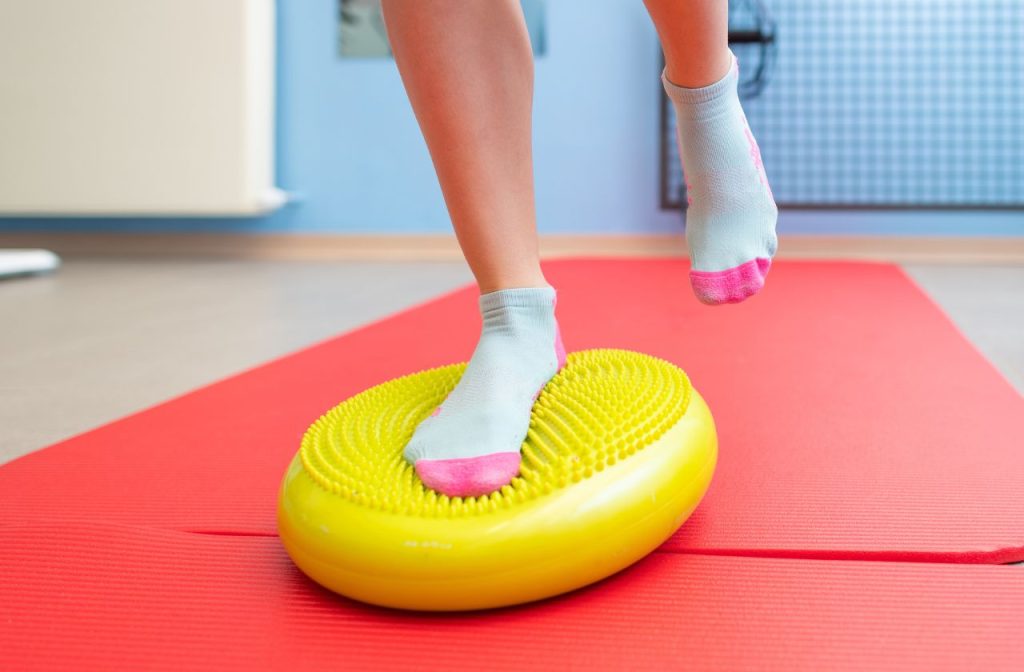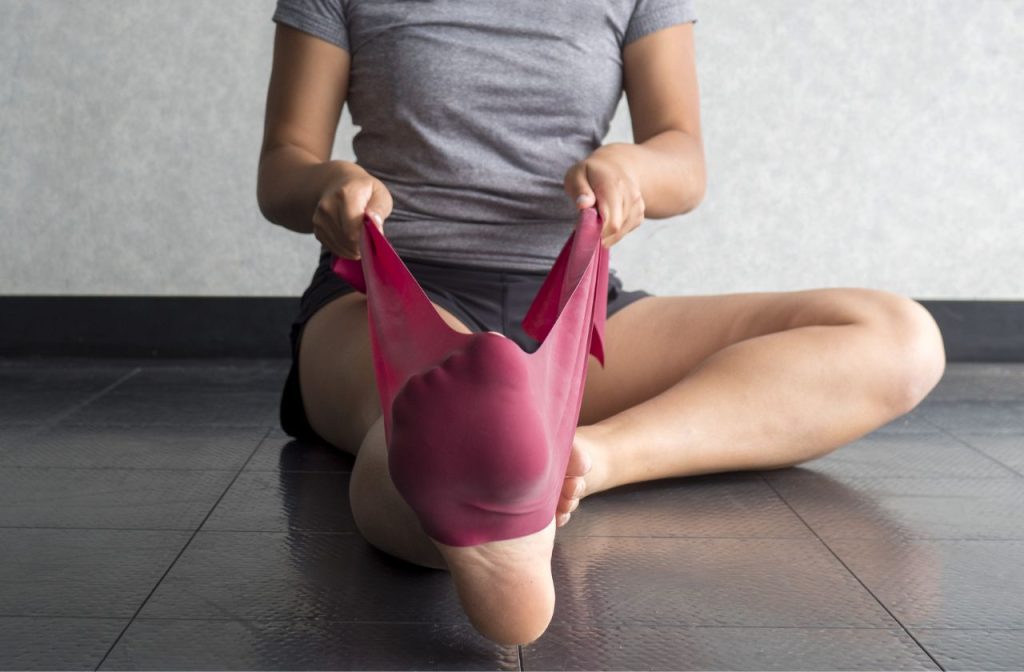Dealing with the aftermath of an ankle sprain? Pain, bruising, swelling and fear of more serious injury are common after an ankle sprain. At Advance Foot Clinic Podiatry, we understand the challenges you may be facing. In this guide, we’ll walk you through symptoms and triaging for ankle sprains, along with effective ankle sprain recovery strategies. Whether you’re in Brisbane or Mount Isa, our expert podiatrists are here to provide you with the advice, help and care you need.
Understanding Ankle Sprains

Ankle sprains are a prevalent injury that can occur during many activities. They often result from sudden twists, turns, or awkward landings, particularly during sports or physical activities like basketball, running and hiking.
The Mechanics of Ankle Sprains
Ankles are one of the most important joints in the body. Just have a think about how much force and shock goes through them everyday to keep us balanced on our feet, walking, running and standing up straight (hint – it’s up to 2.5 x times your body weight!). It is no surprise then that our bodies have mechanisms in place to protect this vulnerable joint.
Alongside the muscles and tendons which support and move the ankle bones, we also have some very strong ligaments which surround the ankle on both sides. These ligaments are our body’s main defence against serious ankle injury which may have a permanent impact on our gait and mobility. The ligaments are designed to allow for a certain amount of motion to occur in the ankle joint but stop it from passing a certain point and ‘rolling over.’
When your ankle is pushed too far beyond this resistance point which the ankle tendons provide, an ankle sprain will occur. An ankle sprain is usually a tear or rupture of one or more ligaments. In very severe cases, bone injury or dislocation can occur, however usually the ligaments will absorb most of the damage.
Inversion vs Eversion ankle sprains
Have you ever noticed that most ankle sprains happen on the outer (lateral) side of your foot? This is called an inversion sprain and is the by far most common type of ankle sprain. It is named an ‘inversion’ sprain because it occurs when there is excess inversion at the ankle (rotation of the sole of your foot towards the midline of your body or to face the other foot).

Why are inversion ankle sprains more common than eversion sprains?
The reason an inversion sprain is much more common than an eversion ankle sprain is because the ligaments on the outside of the ankle (lateral ligaments) are looser and weaker than the very strong ‘deltoid’ ligament which supports the inside (medial) ankle. The reason for this is twofold. Firstly, the ankle is designed to have more range of motion when turning in (inverting) compared to turning out (everting). Secondly, the major artery, vein and nerve of the foot run on the inside of the ankle, through something called the ‘tarsal tunnel.’ As these vessels are so important to foot function, they are heavily protected by a stronger ligament capsule.
Grades of Ankle Sprains

Ankle sprains come in different varieties, ranging from mild to severe (grades 1 through 3). Knowing the type of sprain is crucial for tailoring an effective treatment plan. A lot of the time, diagnosis is made using medical imaging along with a clinical examination of the feel of the ligaments of the ankle. Our podiatrists are skilled in providing this assessment and can refer for imaging if necessary.
Signs and Symptoms of Ankle Sprains
Recognizing the signs and symptoms of an ankle sprain is the first step in seeking the right treatment through a podiatrist. Keep an eye out for:
Pain and Swelling
Ankle sprains typically manifest with immediate pain and swelling. We’ll help you differentiate between a mild sprain that may heal with home care and a more serious injury that requires professional attention.

Bruising and Instability
Notice bruising around your ankle or feel like it’s unstable? These symptoms can provide important clues about the extent of your ankle sprain. Understanding the signs will guide you in determining the appropriate course of action.
Immediate Care for Ankle Sprains
Taking the right steps in the immediate aftermath of an ankle sprain can significantly impact your recovery. Consider the following:
R.I.C.E. Protocol

The R.I.C.E. protocol—Rest, Ice, Compression, and Elevation—is essential to reduce the immediate swelling and pain from an ankle sprain. Properly following these steps can accelerate your recovery.
Pain Management Techniques
Don’t be afraid to use pain relief medication – ankle sprains need it! Our podiatrists will discuss how to choose the right approach for your specific situation, ensuring a more comfortable recovery process.
Rehabilitation Exercises
Once the initial swelling has subsided, it’s time to start rehabilitation. We’ll guide you through a series of gradual exercises designed to strengthen your ankle and improve flexibility:

Range of Motion Exercises
Rehabilitation will focus on a comprehensive set of range of motion exercises that can help restore mobility to your ankle and prevent stiffness during the recovery process. These exercises are crucial for regaining normal function.
Strengthening Exercises

Strengthening the muscles around your ankle is pivotal for stability. We’ll introduce you to a variety of exercises that target key muscle groups, supporting a full recovery and minimizing the risk of re-injury.
Professional Guidance and Treatment Options
If your ankle sprain is severe or persists despite home care, seeking professional guidance is essential. At Advance Foot Clinic Podiatry, our team offers a range of treatment options tailored to your specific needs. In severe cases for example, you may be fitted with a CAM Walker/Moon Boot, lightweight ankle brace, custom orthotics or ankle taping. Your podiatrist will discuss the different options and how they can aid in your recovery.
4 Steps to Preventing Ankle Sprains
Once you are back on your feet pain-free, that is exactly how you will want to stay! That’s why our experienced podiatrists have learned to put so much work in to prevention of future ankle injuries once they have helped you recover. Here are some practical tips to help you avoid ankle sprains in the future:

1. Warm-Up and Stretching
Before engaging in physical activities, make sure to warm up your muscles and perform stretching exercises. This prepares your body for movement and reduces the risk of sudden twists and sprains.
2. Wear Proper Footwear
Invest in footwear that provides adequate support and stability for your specific activities. Well-fitted shoes can make a significant difference in preventing ankle injuries during sports or daily tasks.For example, hiking and basketball shoes usually have heightening support around the sides of your ankle due to the high amount of side-to-side ankle movement involved in both activities.
3. Strengthening Exercises for Prevention

Incorporate regular ankle-strengthening exercises into your fitness routine. This proactive approach helps build strength and stability, reducing the likelihood of future sprains. An easy exercise you can do is rotating your feet inwards so that the soles face each other. Then repeat the opposite motion. Use a resistance band to build muscle strength.
4. Pay Attention to Surfaces
Be mindful of the surfaces you walk or run on. Uneven terrain increases the risk of ankle sprains. Watch your step, especially in unfamiliar or challenging environments.
Recover from Ankle Sprains at Advance Foot Clinic
Recovering from an ankle sprain requires patience, dedication, and the right guidance. The team at Advance Foot Clinic Podiatry is here to support you every step of the way. Schedule an appointment at one of our Brisbane or Mount Isa clinics, and let’s work together to get you back on your feet, stronger than ever! Remember, prevention is key, so take the necessary steps to safeguard your ankles and enjoy a more active, injury-free lifestyle.



